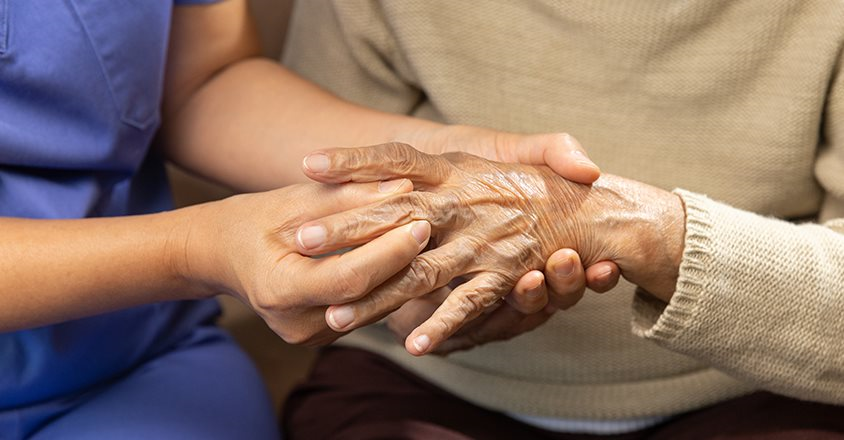

Questions About Arthritis? We have the answers.
-
Wednesday, April 19, 2023
- |
The CDC reports that 58.5 million, or 24%, American adults suffer from arthritis. The same study shows that 1 in 10 adults limit their activity due to pain associated with arthritis.
To help us navigate some basic information about arthritis, we caught up with Nina Couette, D.O., a rheumatologist with the Genesis Medical Group.
What is arthritis?
There are many types of arthritis, but the two main types of arthritis include osteoarthritis and inflammatory arthritis. Osteoarthritis, which Dr. Couette describes as degenerative and wear-and-tear arthritis, is the most common. Other kinds of inflammatory arthritis includes rheumatoid arthritis, psoriatic arthritis and gout.
In osteoarthritis, people experience pain and achiness in joints more toward the end of the day or with a lot of use. With inflammatory arthritis, the pain usually is more severe in the morning with prolonged stiffness lasting hours. People may experience stiffness and soreness in the joints as well, but it tends to get better with activity.
Since it’s the most common, we will primarily focus on osteoarthritis in this article. Please note that people diagnosed with rheumatoid arthritis early have a better quality of life. So, if you think you may be experiencing rheumatoid arthritis symptoms, schedule a visit with your doctor as soon as possible.
Underlying causes of osteoarthritis
There are many causes of osteoarthritis. Some include:
- Age
- Genetics
- Joint Injury or overuse related to work or sports
- Obesity
- Weak Muscles
“Arthritis can impact everyone differently,” said Dr. Couette. “Unfortunately, there’s not an easy way to predict who will have severe versus mild osteoarthritis.”
Managing osteoarthritis symptoms
The first step to treating your arthritis symptoms is talking with your primary care physician. They may do some testing to determine which kind of arthritis you’re suffering from. Depending on the severity of your arthritis, your doctor may refer you to an arthritis specialist or a rheumatologist like Dr. Couette.
Although there is no cure for osteoarthritis, there are ways to manage your pain. Your doctor can share both medicated and non-medicated treatment options.
Non-medicated options:
- Exercising
- Weight loss
- Controlling high blood sugar and high blood pressure
- Following a healthy diet
“We’ve found that osteoarthritis is a disease of the whole joint,” said Dr. Couette. “That includes the bone, the cartilage, the ligaments and the tissues surrounding the joint. It’s important to keep those muscles and ligaments strong. That’s where exercise comes in.”
As strange as it may sound, moving your body more will help ease your osteoarthritis pain. Added physical activity can eventually lead to weight loss, which also helps alleviate arthritis pain. The Arthritis Foundation found that if you lose 10% of your body weight, arthritis pain decreases by 50%.
Experts suggest 150 minutes of physical activity per week. Dr. Couette recommends low-impact exercise for patients with arthritis.
“Things like swimming, cycling or yoga tend to be the best because you’re putting less pressure on your joints,” said Dr. Couette.
Remember, any amount of movement is helpful. You can learn to move your body through group classes at your community center or local gym. Overall, living a healthy lifestyle can both slow the beginning of your arthritis and help ease your pain.
Medicated options:
- Anti-inflammatories like acetaminophen or ibuprofen
- Topical medications
- Steroid injections
- Joint replacements
Over-the-counter anti-inflammatory medications and topical medications are options for those suffering from the typical aches and pains that come with an arthritis diagnosis. Steroid injections and joint replacements are for those who are no longer able to manage their pain.
Don't let arthritic pain hold you back from doing the things you love. Get in touch with your primary care provider to create a treatment plan that’s best for you.